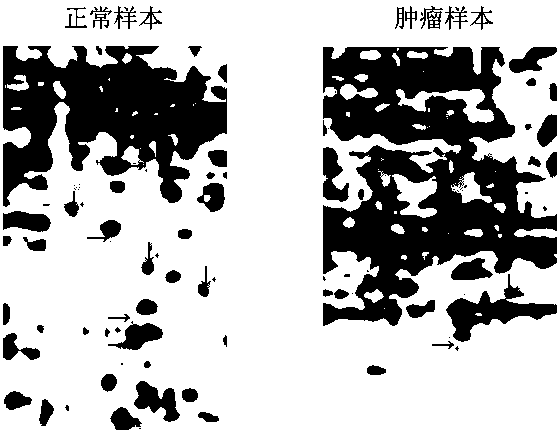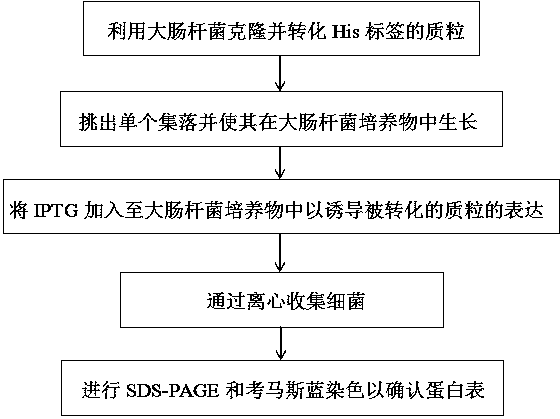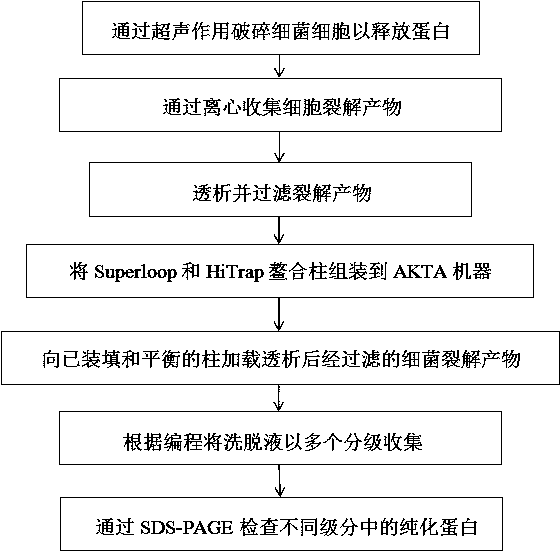Application of a set of tumor-associated antigens in early screening kit for esophageal cancer and kit thereof
A tumor-associated antigen, esophageal cancer technology, applied in the field of tumor molecular biology, can solve the problems of limitation, low efficiency, high cost, etc., and achieve the effects of good clinical application prospects, convenient use and small side effects
- Summary
- Abstract
- Description
- Claims
- Application Information
AI Technical Summary
Problems solved by technology
Method used
Image
Examples
Embodiment 1
[0025] Example 1: Discovery and identification of biomarkers in esophageal cancer tumors
[0026] (1) Protein extraction from patient biopsies
[0027] 500 mg of patient paired biopsies (tumor biopsies versus adjacent normal tissue) were collected and washed with PBS, snap-frozen by immersion in liquid nitrogen, then removed, homogenized using a pestle and mortar, and injected into Add 5 µL lysis solution to the homogenized sample, which contains 8mol / L urea, 4% (v / v) CHAPS, 2% (v / v) IPG buffer and 0.2mg / mL PMSF, then vortex to mix At least 5min until the tissue is completely dispersed; then centrifuge at 14000rpm / min for 10min at 4°C, centrifuge the lysate to clarify, and take the supernatant for later use; use the cleaning kit, namely 2D CleanUp kit, to further clean the supernatant to remove salt and impurities; resuspend the pellet with 1 µL of rehydration solution (lysed solution without DTT&IPG buffer); then use the Bio-Rad protein assay to measure the concentration of ...
Embodiment 2
[0036] Example 2: In vitro expression and protein purification of biomarker panels
[0037] (1) In vitro expression of biomarker panels
[0038] Based on the amino acid sequence of the targeted biomarkers, commercially synthesized cDNA clones are used to express the biomarker panel. The in vitro expression process of the biomarker panel is as follows: figure 2 As shown, the specific process is as follows:
[0039] HIS-tagged plasmids containing cDNA inserts encoding biomarker panels were transformed into DH5 competent cells, single colonies were picked and grown in bacterial culture, the number of plasmids was expanded, and extracted from bacteria by miniprep Extract the plasmid, further transform the plasmid into BL21DE3 or BL21DE3pLysS competent cells, select the transformed bacteria and grow them in 2X 100mL LB medium, when the bacterial culture reaches an OD value of 0.06, add 200µM to 100mL bacterial culture For IPTG, use 100 mL of bacterial culture without IPTG as a neg...
Embodiment 3
[0044] Example 3: Preparation of biomarker-BioPlex bead conjugates
[0045] The biomarker histone prepared by referring to the method described in Example 2 or the purchased biomarker histone with a purity of more than 90% were used to couple the biomarker histone to the BioPlex beads. The specific process was to combine the uncoupled The linked BioPlex beads were vortexed for 30s, then sonicated for 15s, and 1,250,000 BioPlex beads were collected in a reaction tube by centrifuging 100µL BioPlex beads at 10000rpm / min for 4min, and washed with 100µL BioPlex bead washing buffer by centrifugation Finally, resuspend the BioPlex beads in 80 µL of BioPlex bead activation buffer, which is MES buffer containing EDC / NHS activation system, and then add 10 µL of 50 mg / mL freshly prepared N-hydroxysulfosuccinate to the BioPlex beads Imine (S-NHS) aqueous solution and 10 µL of 50 mg / mL freshly prepared 1-ethyl-3-(3-dimethylaminopropyl) carbodiimide (EDC) aqueous solution were incubated at ...
PUM
 Login to View More
Login to View More Abstract
Description
Claims
Application Information
 Login to View More
Login to View More - R&D
- Intellectual Property
- Life Sciences
- Materials
- Tech Scout
- Unparalleled Data Quality
- Higher Quality Content
- 60% Fewer Hallucinations
Browse by: Latest US Patents, China's latest patents, Technical Efficacy Thesaurus, Application Domain, Technology Topic, Popular Technical Reports.
© 2025 PatSnap. All rights reserved.Legal|Privacy policy|Modern Slavery Act Transparency Statement|Sitemap|About US| Contact US: help@patsnap.com



